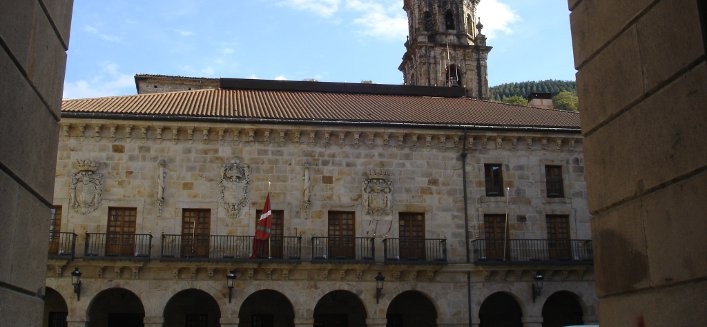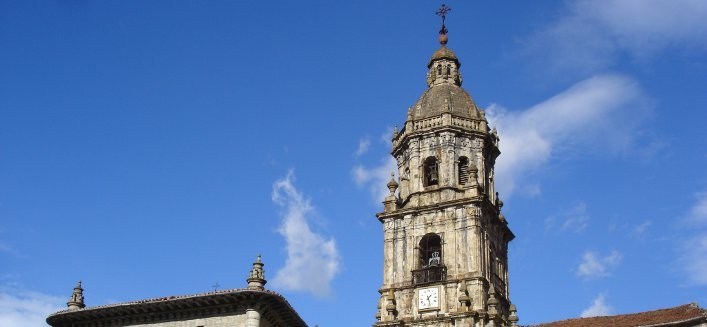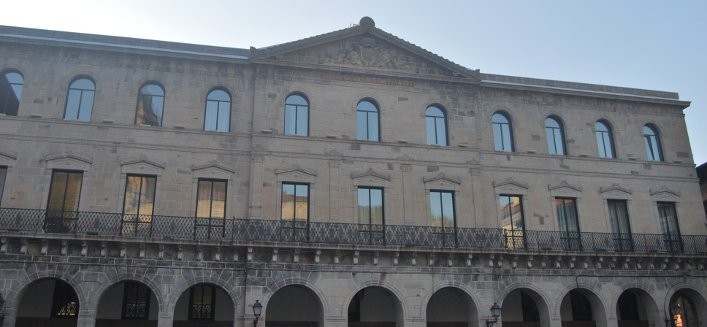Bergara in the 17th century was at the forefront of artistic creativity in this region both in quantity and quality of the works produced.
The Town Hall, designed by the architect Lucas de Longa at the end of the 17th century, is the most significant building. It follows the typical structure of the council buildings of the time: open arches on the ground floor, a long balcony for official acts and coat of arms in the eaves of the façade. An extension was erected at the right of building in the 18th century.
Irizar Mansion and its gardens are from the same period. This is a sober building with decoration focused on the Urrutia-Espilla family coat of arms. The gardens are classified as a Monument by the Government of the Basque Country. It is prominent for being somewhat unique and distinctive in the district because it follows the Renaissance style fashionable at the time.
It is also important historically because this was the place where the peace treaty ending the first Carlist wars was signed on 31 August 1839. The town council has set up a small information area to commemorate that event which is open every day.
One of the outstanding architectural features in the landscape of Bergara is the bell tower of the Parish Church of San Pedro de Ariznoa. Even though the construction of the church started at the end of the 15th century and finished around 1620, the Baroque tower was completed later, in 1742, by the architect Jose Lizardi.
Bergara in the 18th century is closely linked to the figure of the Count of Peñaflorida and the Royal Seminary, created under the direction of the Real Sociedad Bascongada de Amigos del País (The Royal Basque Society of Friends of the Country). The wave of enlightened ideas existing at the end of the 18th century turned Bergara into one of the most important centres for science teaching and research in Europe. The original structure built at the time no longer exists.
It was then that the brothers Juan Jose and Fausto Elhuyar isolated the element Wolfram (or tungsten) in the Chemicum Laboratorium of the Real Seminario Patriotico Bascongado de Bergara (Royal Patriotic Seminary of Bergara).
The façade of the Royal Seminary is from the 19th century, of Neoclassical style and regular shape. The third floor is decorated with repeated classical motifs and the eaves are finished with a pediment that breaks up the continuous lines of the building.
Errekalde Mansion and its gardens were also built in the 19th century. Residence of the Count de Peñaflorida whilst he supervised the research carried out at the Seminary, the house is of an imposing style and still retains many of the features from the preceding tower house dating back to the 16th century. The main feature of the interior is the staircase that leads to the different areas and period rooms. Nowadays it is the site of the tourist office and the Laboratorium Museum, and is open to visitors.
The style of the garden is also typical of the time. Tree and plants grow in a structured manner and the outstanding feature is a system to channel the water.





